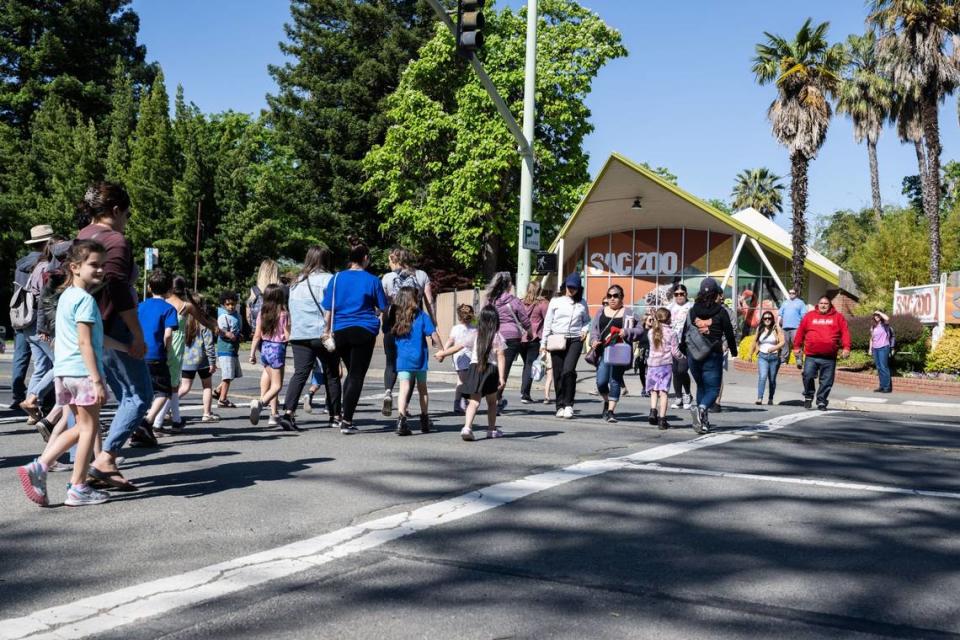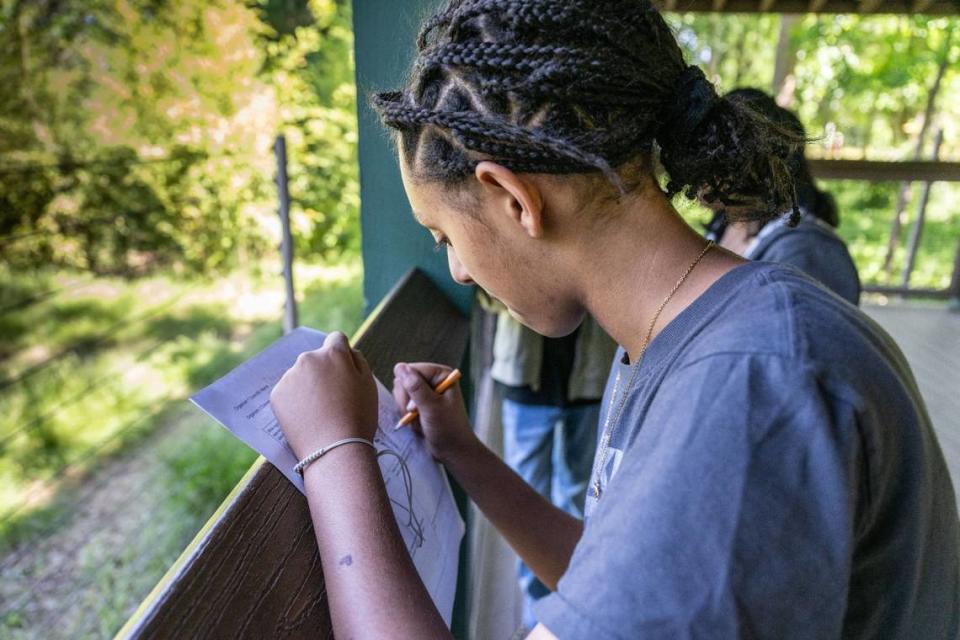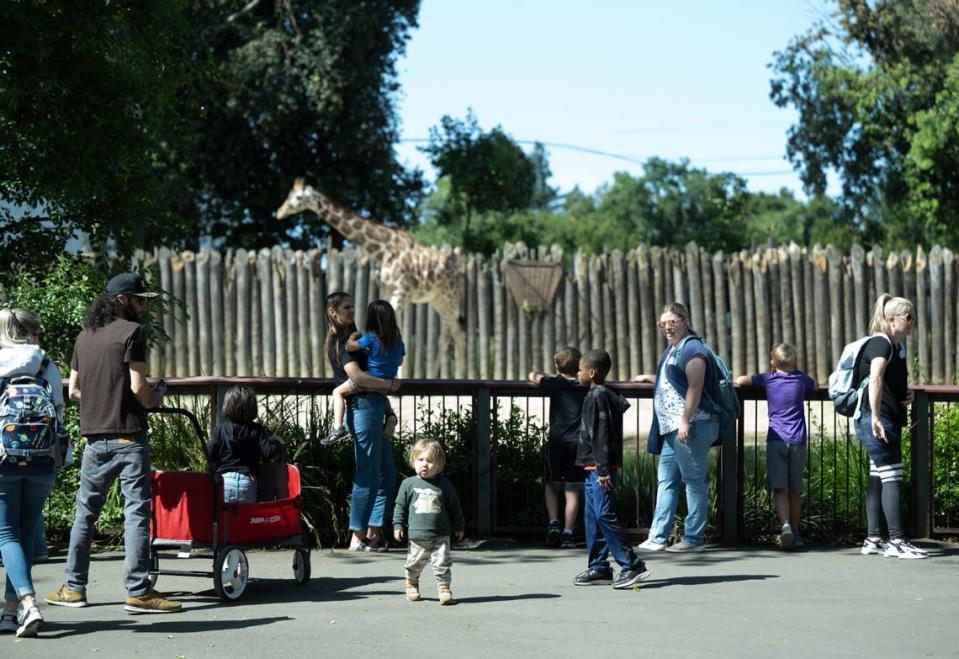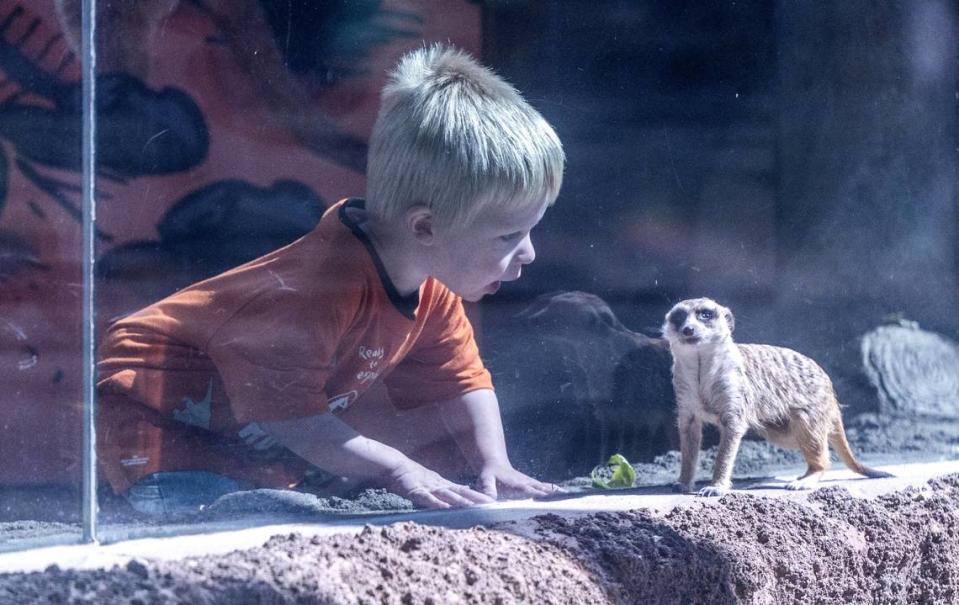What the Sacramento Zoo move to Elk Grove means for its educational programming
In the Spotlight is a Sacramento Bee series that digs into the high-profile local issues that readers care most about. Story idea? Email metro@sacbee.com.
The Sacramento Zoo has offered educational programs since just a few years after its opening in 1927 and has grown those programs substantially in recent decades. More than 50,000 children from school districts across Northern California visit the facility each year. But with the zoo’s expected move to Elk Grove in 2029, how will existing programs be affected?
According to zoo officials and local educators, very positively. Anne Geiger, the zoo’s director of education, said that the new location could “easily double” their capacity for school field trips alone, potentially allowing for more than 100,000 students to visit the zoo annually.
On busy spring days, buses of children showing up at the current Land’s Park location may have to wait for up to an hour to drop off children, Geiger said. Then, drivers begin the arduous search for a nearby spot to park because the zoo does not have any designated parking for visitors.
Plans for the new location include 1,600 parking spaces (with spots allocated specifically for buses) and a dedicated entry for school groups, which combined with increased daily visitor capacity, could improve accessibility for schools that need to coordinate bus and staff scheduling. Currently, schools can be denied a field trip on the busier days of the season.

Infrastructure for education within the park would expand too; a new educational center with two dedicated classrooms will house youth classes and educational talks, plus many animal exhibits will feature built-in space for lessons and learning modules.
The potential for educational offerings spans much wider than just school visits to the zoo — local educators say that building a zoo from the ground up represents a vast range of possibilities for students of all ages across disciplines. There’s no need to wait until 2029 either, because students can participate in the yearslong process to establish the new facility.
“This could be a once in a lifetime opportunity to build connections with this project into school curriculum,” said Maggie Ellis, elementary lead association director for the Elk Grove Educational Association. “It’s going to lead to opportunities for generations of kids to gain experience through this zoo.”
Local educators are eager to explore these pathways. In a survey about zoo teaching opportunities Ellis sent out to 3,000 Elk Grove teachers, 87% of 1,000 respondents said they were interested or very interested in participating. Ellis said that this response rate is unheard of for an email survey, indicating strong enthusiasm among teachers.

The zoo’s not just for kids
Most of the work Geiger and her team do now is for preschool through elementary age students, but she and Lesley Kirrene, the zoo’s director of institutional advancement and marketing, are working with local educators to craft more programs for high school and college students.

Rudy Ortega, principal of Elk Grove High School, is working with zoo administrators to theorize new experience-based learning opportunities that could prepare students for college and careers in myriad subject areas. The connection to biology and animal science is implicit, but there is much more that goes into the construction and maintenance of a zoo. Ortega and others involved in potential curriculum development referenced opportunities to teach students about graphic design, marketing, engineering, culinary arts and visual arts.
Some of these opportunities are already in motion; the city of Elk Grove partnered with the Franklin High School Fullstack Developers Club to create a 3D virtual simulation of the proposed zoo plans. The city plans to continue the partnership with the cohort as the project develops.
Zoo administrators also expect the yearslong partnership with UC Davis Veterinary Medicine program to grow with the move. Through the program, students are given hands-on experience treating wild animals.
The power of animal interactions
Offerings for elementary age students will also broaden in future years. More space, staff and volunteer docents will make programs like preschool, summer camps and the Zoo Mobile, which brings live animals and zoo educators into local classrooms, accessible to more children than before. The goal is to reach as many kids as possible to not only educate them and foster a love of animals, but to help kids develop.

Geiger has seen effect animals have on children firsthand throughout the years. She recalled witnessing a woman crying and later learned that the mother’s nonverbal 9-year-old son spoke his first words to one of the zoo’s animals.
“We are very aware that animals have the power to bring things out of children and adults that we’re not always aware of,” Geiger said. “I can’t always tell you exactly what program is going to touch somebody, but I’ve certainly seen some phenomenal things happen in the years that I’ve been here.”
Ellis echoed that sentiment, saying that “planting the seed” early can lead to a plethora of good outcomes for children and the community.
“We never know what’s going to stick with kids, but we know hands-on experience and personal connection make a difference,” she said. “It plants a seed to grow in the future in ways you could never expect.”

